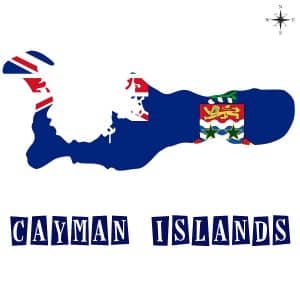Headlines
Cayman Islands Population, Official Language And More
The year 1734 marked the rough beginning period of permanent settlement in Grand Cayman. Cayman Brac and Little Cayman were not permanently settled until 1833. A variety of people settled on the islands: pirates, refugees from the Spanish Inquisition, shipwrecked sailors, and slaves. The majority of Caymanians are of African, Welsh, Scottish or English descent with considerable interracial mixing.

Cayman Islands
The Population
According to the Economics and Statistics Office of the Government of the Cayman Islands, the Cayman Islands had a population of 71,432 at the Census of 10 October 2021, but was estimated by them to have risen to 81,546 as of December 2022, making it the most populous British Overseas Territory.
The Landmark
The Cayman Islands are generally low-lying, though Cayman Brac has a central bluff that constitutes 90 percent of its landmass. The coasts are ironshore (limestone fringes with numerous marine fossils) interspersed with sandy beaches and enclosed by coral reefs. Grand Cayman is the largest and most populous island, about 22 miles (35 km) long and 8 miles (13 km) across at its widest, with a total area of 76 square miles (197 square km). It has a 36-square-mile (93-square-km) sound that is a breeding ground for much marine life. Cayman Brac, about 89 miles (143 km) northeast of Grand Cayman, is the next largest island; it is about 12 miles (19 km) long, averages about 1 mile (1.6 km) in width, and has the highest elevation of the group, rising to 140 feet (42 metres) above sea level. Its total area is 14 square miles (36 square km). The smallest of the islands, Little Cayman, lies 5 miles (8 km) west of Cayman Brac; it is 10 miles (16 km) long and has a maximum width of 2 miles (3 km) and a total area of 10 square miles (26 square km).
The Official Language
The official language of the Cayman Islands is English.
The Culture
The majority of Caymanians are of African, Welsh, Scottish or English descent with considerable interracial mixing. The culture of the Cayman Islands reflects its diverse ethnic heritage. The islands have a rich history that has been influenced by seafaring traditions and British colonialism. The people are known for their hospitality and friendliness. Music is an important part of their culture with calypso and reggae being popular genres.
The Economic Stability
The economy of the Cayman Islands is heavily dependent on tourism and financial services. It is one of the world’s largest offshore financial centers with more than 600 banks and trust companies located there 2. The islands have no direct taxation system and instead rely on indirect taxes such as import duties and fees for financial services. This has led to a high standard of living for residents with no income tax or capital gains tax. In addition to tourism and financial services, other industries include construction, real estate development, and retail trade.
The GDP
According to the World Bank, the GDP per capita of the Cayman Islands was $70,000 in 2020. The economy of the Cayman Islands is mainly fueled by the tourism sector and by the financial services sector, together representing 50–60 percent of the country’s gross domestic product (GDP).
The Currency
The official currency of the Cayman Islands is the Cayman Islands dollar (KYD). It is pegged to the US dollar at a rate of 1 KYD to 1.20 USD.
The Food
The cuisine of the Cayman Islands is a fusion of Caribbean, Jamaican, British, and American influences. Seafood is a staple in Caymanian cuisine with dishes such as conch stew, turtle soup, and fish rundown being popular. Other popular dishes include jerk chicken, rice and beans, and cassava cake.
Major Cities
The capital city of the Cayman Islands is George Town. It is located on Grand Cayman and is home to many of the island’s businesses and financial institutions. Other major cities include West Bay, Bodden Town, East End, and North Side.
Major Airport, Sea Port and Schools
The main airport in the Cayman Islands is Owen Roberts International Airport located on Grand Cayman. It serves as a hub for several airlines including Cayman Airways and British Airways. The main sea port is Port of George Town which serves as a hub for cargo ships and cruise ships. There are several schools in the Cayman Islands including public schools and private schools. Some notable schools include Cayman International School, St. Ignatius Catholic School, and Cayman Prep and High School.





